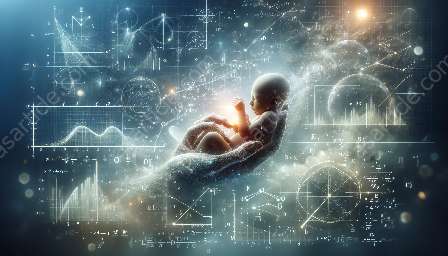Machine learning and statistics are two closely related fields that play a significant role in the realm of data analysis and decision-making. Both disciplines involve the use of mathematical techniques to uncover patterns and insights from data. Together, they form a powerful set of tools that drive innovation and improve the way we understand and interact with the world around us. In this topic cluster, we will explore the intersection of machine learning and statistics, highlighting their similarities, differences, and practical applications. We will also delve into the underlying mathematical principles that connect these two fields, providing a comprehensive overview of how statistical mathematics and general mathematics & statistics are fundamental to their core. By the end of this journey, you will have a deeper understanding of how machine learning and statistics work together and the impact they have on various industries and disciplines.
The Intersection of Machine Learning and Statistics
Machine learning and statistics are often seen as two sides of the same coin, with overlapping concepts and methodologies. Statistics is the study of data collection, analysis, interpretation, presentation, and organization, while machine learning focuses on developing algorithms that can learn from and make predictions or decisions based on that data. Both disciplines aim to extract valuable information and insights from data, but they approach this goal from different angles.
Statistics traditionally focuses on inference, hypothesis testing, and uncertainty estimation, employing techniques such as linear regression, t-tests, and analysis of variance to draw conclusions from data. On the other hand, machine learning emphasizes predictive modeling, pattern recognition, and automation of decision-making processes, leveraging algorithms like decision trees, neural networks, and support vector machines to train models on data and make accurate predictions.
While statistics provides a strong theoretical foundation for understanding uncertainty and variability in data, machine learning offers practical tools for building predictive models and uncovering complex patterns. The synergy between these two fields enables data scientists and analysts to combine the interpretability and insight of statistical methods with the predictive power and scalability of machine learning algorithms.
Key Concepts and Techniques
Understanding the key concepts and techniques in both machine learning and statistics is essential for mastering their intersection. In statistics, concepts such as probability distributions, inferential statistics, and hypothesis testing form the bedrock of statistical inference and decision-making. These concepts help analysts quantify uncertainty, assess the significance of relationships in data, and make informed decisions based on empirical evidence.
On the other hand, machine learning introduces concepts like supervised learning, unsupervised learning, and reinforcement learning, which encompass a wide range of algorithms and methods for training predictive models. Supervised learning involves training a model on labeled data to make predictions, while unsupervised learning focuses on extracting patterns and structure from unlabeled data. Reinforcement learning, on the other hand, revolves around training agents to make sequential decisions through interaction with an environment.
Techniques such as regression analysis, classification, clustering, and dimensionality reduction are fundamental to both statistics and machine learning, serving as building blocks for various applications. Regression analysis helps in modeling the relationship between variables, classification aids in categorizing data into different classes, clustering groups similar data points together, and dimensionality reduction simplifies complex data by capturing its essential features.
Practical Applications
The marriage of machine learning and statistics has led to a myriad of practical applications across diverse domains. In healthcare, predictive modeling using machine learning and statistical techniques has revolutionized disease diagnosis, prognosis, and treatment planning. By analyzing vast amounts of patient data, healthcare professionals can make more accurate predictions about disease progression and recommend personalized interventions.
In finance, the combination of statistical methods and machine learning algorithms has empowered investment firms to build robust models for asset pricing, risk assessment, and portfolio optimization. These models leverage historical market data and statistical analysis to identify investment opportunities, manage risk, and achieve better returns for investors.
In e-commerce, recommender systems powered by machine learning and statistics are reshaping the way businesses engage with their customers. By analyzing customers' purchase history and preferences, these systems generate personalized product recommendations, enhancing customer satisfaction and driving sales.
Merging Statistical Mathematics and General Mathematics & Statistics
Statistical mathematics serves as the theoretical foundation for statistical methods and techniques, providing a framework for analyzing uncertainty and making inferences from data. Probability and statistics, along with concepts from calculus and linear algebra, form the backbone of statistical mathematics, enabling analysts to quantify uncertainty, estimate parameters, and test hypotheses.
General mathematics & statistics encompass a broader spectrum of mathematical concepts and tools that are fundamental to both machine learning and statistics. Linear algebra, for instance, underpins the mathematics of machine learning, playing a crucial role in the formulation and optimization of machine learning algorithms. Differential equations, discrete mathematics, and optimization techniques are also integral to the development and analysis of models in both disciplines.
The convergence of statistical mathematics and general mathematics & statistics provides a rich tapestry of mathematical techniques that underpin the methodologies and applications of machine learning and statistics. By understanding the interplay between these mathematical disciplines, practitioners can enhance their problem-solving abilities and develop more effective solutions for real-world challenges.
Conclusion
Machine learning and statistics are intertwined in their pursuit of leveraging data to gain insights and make informed decisions. Their intersection draws upon the foundational principles of statistical mathematics and general mathematics & statistics, showcasing the essential role of mathematical reasoning and analysis in the field of data science. As the landscape of data continues to evolve, the synergy between machine learning and statistics, supported by a solid mathematical framework, will drive innovation and unlock new possibilities in various domains.

